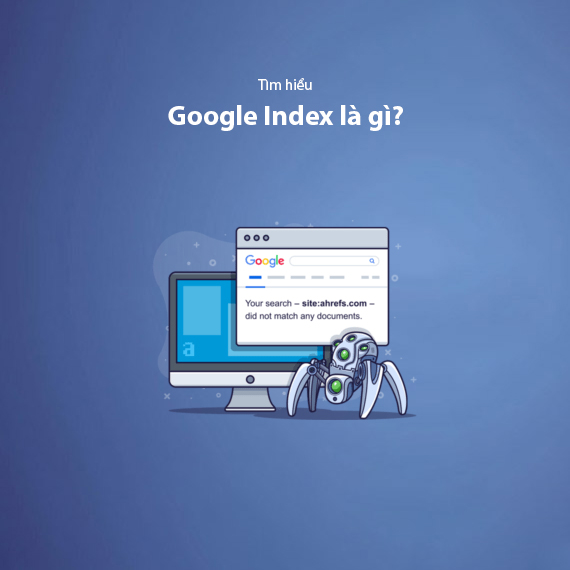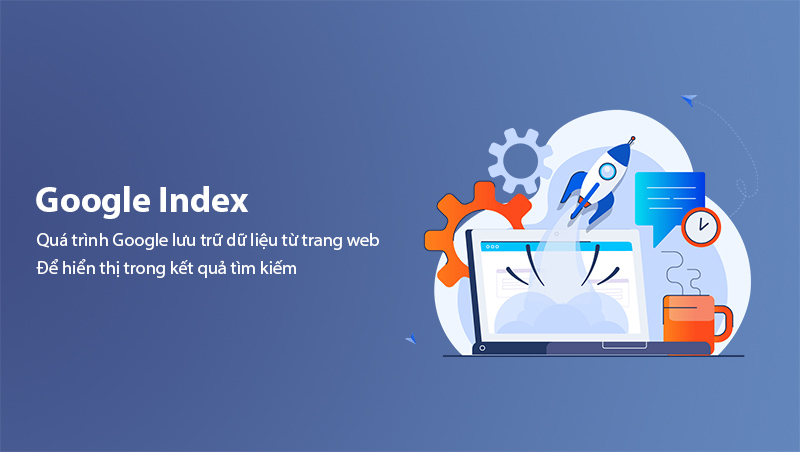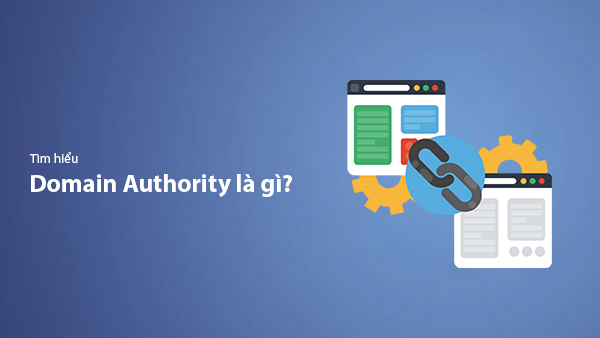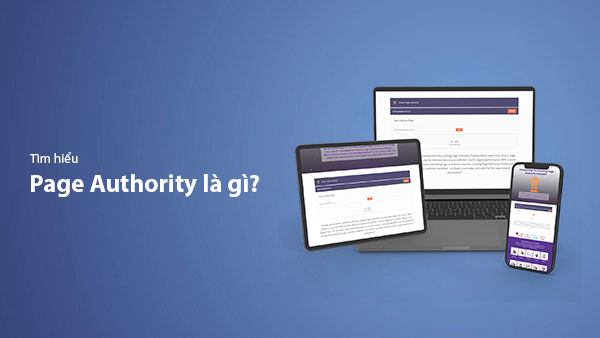What is Google Index? A Comprehensive Guide to Fast Website Indexing in 2025
- Published on

- What is Google Index?
- How Does Slow Indexing Affect a Website?
- How to Check if Your Website is Indexed by Google
- Top 13+ Ways to Get Your Website Indexed on Google Faster
- Remove Crawl Block Codes in the robots.txt File
- Remove Fake Noindex Tags
- Add Pages to the Sitemap
- Remove Fake Canonical Tags
- Ensure Pages Are Not "Orphaned"
- Fix Nofollow Internal Links
- Add Strong Internal Links
- Ensure Valuable and Unique Content
- Remove Low-Quality Pages
- Build High-Quality Backlinks
- Use the "Request Indexing" Feature in Google Search Console
- Use Google News to Speed Up Indexing
- Leverage Social Signals
- Conclusion
What is Google Index?
Google Index is the process through which Google stores and organizes data from web pages to display in search results when users perform a query. When a website is indexed, it means that Google has crawled the page content, evaluated its relevance, and stored it in its database. If a website is not indexed by Google, its content will not appear in search results, causing the site to lose the chance to attract traffic from potential users. Therefore, ensuring that your pages are properly indexed is a crucial factor in any successful SEO strategy.

How Does Slow Indexing Affect a Website?
When a website experiences slow indexing or fails to be indexed promptly, it can cause significant issues for your SEO strategy:
-
Reduced visibility in search results: If your content is not indexed, the web page will not appear in Google searches, leading to missed opportunities to reach potential users.
-
Losing competitive edge: Your competitors may easily gain an advantage if they continuously update and get their pages indexed faster while your content remains unrecognized.
-
Impact on organic traffic: A non-indexed website means it won’t be present in search results, causing a drop in organic traffic and negatively affecting revenue or overall marketing strategy.
-
Difficulty in updating new content: For news sites, blogs, or e-commerce sites, slow indexing can make it difficult for new product information or articles to reach customers at the right time.
Therefore, ensuring that your website pages are indexed quickly is an important step to maintain SEO efficiency and enhance online visibility.
How to Check if Your Website is Indexed by Google
To check if your website has been indexed by Google, you can use the following methods:
-
Use the "site:" search syntax on Google Search
- Go to the Google search page.
- Enter the syntax
site:yourdomain.comin the search bar (replace "yourdomain.com" with your domain name). - Press Enter. If the result returns a list of pages from your website, it means those pages have been indexed. If no results appear, the page may not be indexed or is blocked from crawling.
-
Check via Google Search Console
- Log in to Google Search Console and select your website property.
- Navigate to the "Coverage" section to see the number of indexed pages and any errors affecting the indexing process.
-
Use online index checking tools
There are many tools available, such as Index Checker or Small SEO Tools, that help you check the index status by entering your website URL. These tools provide detailed information on the number of indexed pages quickly.
Regularly checking your website’s index status ensures that your important content is always ready to appear in search results.
Top 13+ Ways to Get Your Website Indexed on Google Faster
To ensure that your website is indexed quickly by Google and appears in search results at the right time, apply the following detailed optimization methods:
Remove Crawl Block Codes in the robots.txt File
The robots.txt file is a file that instructs search engines about which parts of the website should or should not be crawled. If you accidentally add the line Disallow: /, it means you’re blocking the entire website from Googlebot, causing it not to be indexed.
Steps to perform:
- Access your website’s root directory to open the
robots.txtfile. - Check for
Disallowlines and ensure they don’t block the directories or pages you want to index. - Delete or adjust the code lines to make sure you only block unnecessary pages, such as admin pages or drafts.
Note: After making changes, go to Google Search Console and select the URL Inspection tool to request a re-indexing.
Remove Fake Noindex Tags
The noindex tag in HTML or header files is used to request that Google not index a specific page. However, sometimes you or your developer may accidentally add this tag to important pages such as articles or product pages.
How to check and fix:
- Open the page source or use tools like Screaming Frog SEO Spider to check for the
<meta name="robots" content="noindex">tag. - If this tag is present on the pages you want indexed, remove the code line or change the content to
"index".
Add Pages to the Sitemap
A sitemap.xml is a map that guides search engines through the entire website structure and the pages that need to be crawled. If a page is not in the sitemap, it is highly likely that Googlebot will skip it.
Sitemap optimization steps:
- Create or update the sitemap.xml to include all the URLs that need indexing.
- Ensure the sitemap.xml is placed in the root directory of your website and is accessible via
yourdomain.com/sitemap.xml. - Submit the sitemap to Google Search Console by going to the Sitemaps section and entering the sitemap URL.
Remove Fake Canonical Tags
The canonical tag helps Google determine the main version of a page and avoid duplicate content. However, if the canonical tag points to the wrong URL (e.g., points to another page or an incorrect main URL), Google may skip indexing that page.
Solution:
- Check the page source for the
<link rel="canonical">tag. - Ensure this tag points to the correct URL of the page itself if you want the page to be indexed.
Ensure Pages Are Not "Orphaned"
Orphan Pages are pages that do not have any internal links pointing to them. This makes it difficult for Googlebot to discover these pages, leading to them not being indexed.
How to fix:
- Use tools like Ahrefs or Screaming Frog to detect orphaned pages.
- Add internal links from other pages within the website to these pages so Google can easily crawl them.
Fix Nofollow Internal Links
If internal links pointing to a page have the nofollow attribute, Googlebot will not follow those links to crawl the page.
Solution:
- Check and remove the
rel="nofollow"attribute from internal links pointing to pages that need to be indexed. - Ensure that important pages have follow links from other pages on the website.
Add Strong Internal Links
Internal links from pages with high traffic or the homepage help improve the indexing speed for new pages. This is because Googlebot tends to prioritize crawling links found on trusted pages.
Steps to implement:
- Add internal links from the homepage or popular articles to new posts that need indexing.
- Use natural anchor texts that contain relevant keywords to increase relevance.
Ensure Valuable and Unique Content
Google always prioritizes indexing pages with high-quality content that is not duplicated and provides value to users. If the content is duplicated or copied from other sources, Google will be less likely to index it.
Note:
- Create unique content and avoid copy-pasting from other sources.
- Ensure each post has at least 500-1000 words and focuses on addressing users' search needs.
Remove Low-Quality Pages
Pages such as error pages, blank pages, or those with thin content can reduce the website’s credibility in Google’s eyes and slow down the indexing of more important pages.
How to handle:
- Use Google Search Console to check for error pages or low-value pages.
- Delete or merge blank, low-quality pages with more comprehensive content pages.
Build High-Quality Backlinks
Backlinks from reputable websites help Googlebot discover and prioritize indexing your website faster.
How to build backlinks:
- Publish posts on reputable websites and forums that contain links back to your website.
- Engage in social media or blog communities to increase your presence and include links to pages that need indexing.
Use the "Request Indexing" Feature in Google Search Console
Google Search Console provides the "URL Inspection" tool that allows you to manually request indexing for important pages, which is particularly useful when you have published new content or updated an article.
How to use:
- Log in to Google Search Console and access your website property.
- Select the URL Inspection tool at the top.
- Enter the URL of the page you want to request indexing for and press Enter.
- If the URL has not been indexed, click "Request Indexing" to send the request to Googlebot.
Note:
- Only request indexing for critical or newly updated pages to avoid spamming requests, as this can reduce effectiveness.
- After submitting the request, the indexing process may take a few hours to a few days, depending on content quality and Google’s crawl rate.
Use Google News to Speed Up Indexing
If your website specializes in news or time-sensitive articles, getting your site into Google News can significantly improve indexing speed. Articles in Google News are often prioritized for crawling and indexing within minutes of publication.
How to register your website for Google News:
- Visit Google News Publisher Center at publishercenter.google.com.
- Log in with your Google account and add your website information, such as site name, language, and news categories.
- Verify ownership by linking your site to Google Search Console.
- Submit a request for review and ensure your site adheres to Google News content guidelines, such as:
- Content must be original and properly sourced.
- Avoid copyright violations or content policy breaches.
- The website structure should be readable and optimized for both mobile and desktop.
Benefits of using Google News:
- Articles are prioritized in the Top Stories section and general search results.
- Enhances site visibility and credibility on Google.
- Attracts significant organic traffic from readers interested in news topics.
Leverage Social Signals
Social signals such as shares, comments, or clicks on links from platforms like Facebook, Twitter, LinkedIn, Instagram can help Google detect and index your website faster. When a link gains traction on social media, Googlebot often increases its crawl frequency to ensure the content is indexed promptly.
How to leverage social signals:
- Share posts on major social media platforms immediately after publishing.
- Add social sharing buttons directly to articles to encourage readers to share content.
- Join relevant groups or communities and link to your website when appropriate (avoid spamming).
- Run small ad campaigns to increase post reach for important articles.
Benefits:
- Helps Google recognize new pages through external link traffic.
- Strengthens website credibility and attracts traffic from various sources.
- Accelerates indexing when strong social signals indicate noteworthy content.
Applying these methods consistently will help your website get indexed by Google quickly, improving visibility in search results and increasing organic traffic. Regularly check your website’s index status to ensure no pages are missed in the SEO optimization process.
Conclusion
Ensuring that your website is indexed quickly by Google is essential for increasing visibility and improving SEO rankings. By applying methods such as optimizing the robots.txt file, using Google Search Console, building strong internal links, and leveraging social signals, you can ensure that your important pages are indexed promptly.
For news or e-commerce websites, speeding up the indexing process can be achieved by registering with Google News or building high-quality backlinks to enhance Googlebot crawl speed. Remember, indexing is not just about getting Google to see your website but is the foundation for achieving sustainable SEO success, helping your content reach the right audience and maximizing organic traffic growth.
Regularly check the index status and update new, quality content to help your website maintain a competitive edge in search results in 2025.
Latest Posts

Lesson 26. How to Use break, continue, and return in Java | Learn Java Basics
A guide on how to use break, continue, and return statements in Java to control loops and program execution flow effectively.

Lesson 25. The do-while Loop in Java | Learn Basic Java
A detailed guide on the do-while loop in Java, including syntax, usage, examples, and comparison with the while loop.

Lesson 24. How to Convert Decimal to Binary in Java | Learn Basic Java
A guide on how to convert numbers from the decimal system to the binary system in Java using different methods, with illustrative examples.

Lesson 23. How to Use the While Loop in Java | Learn Java Basics
Learn how to use the while loop in Java with syntax, real-world examples, and practical applications in Java programming.
Related Posts

What is Domain Authority? 13-Step Guide to Improve DA Score for Your Website in 2025
Discover what Domain Authority is and its importance in SEO. A detailed guide on the 13-step process to effectively increase DA, from content research and technical optimization to building quality backlinks for a sustainable SEO strategy.

What is Page Authority? The Importance of Page Authority for SEO in 2025
Learn what Page Authority (PA) is and its role in SEO optimization to help improve your website's ranking on search engines in 2025.
![What is Onpage SEO? 23+ Basic & Advanced Onpage Optimization Checklist [2025]](/blog-posts/seo-onpage/seo-onpage-thumb.jpg)
What is Onpage SEO? 23+ Basic & Advanced Onpage Optimization Checklist [2025]
Learn the concept of Onpage SEO and the 23+ basic to advanced Onpage optimization checklist to improve website quality and boost search rankings effectively.

What is Yoast SEO? A Comprehensive Guide to Using Yoast SEO Plugin from A-Z
Learn what the Yoast SEO Plugin is and how to use it to fully optimize SEO for your WordPress website from A-Z.

